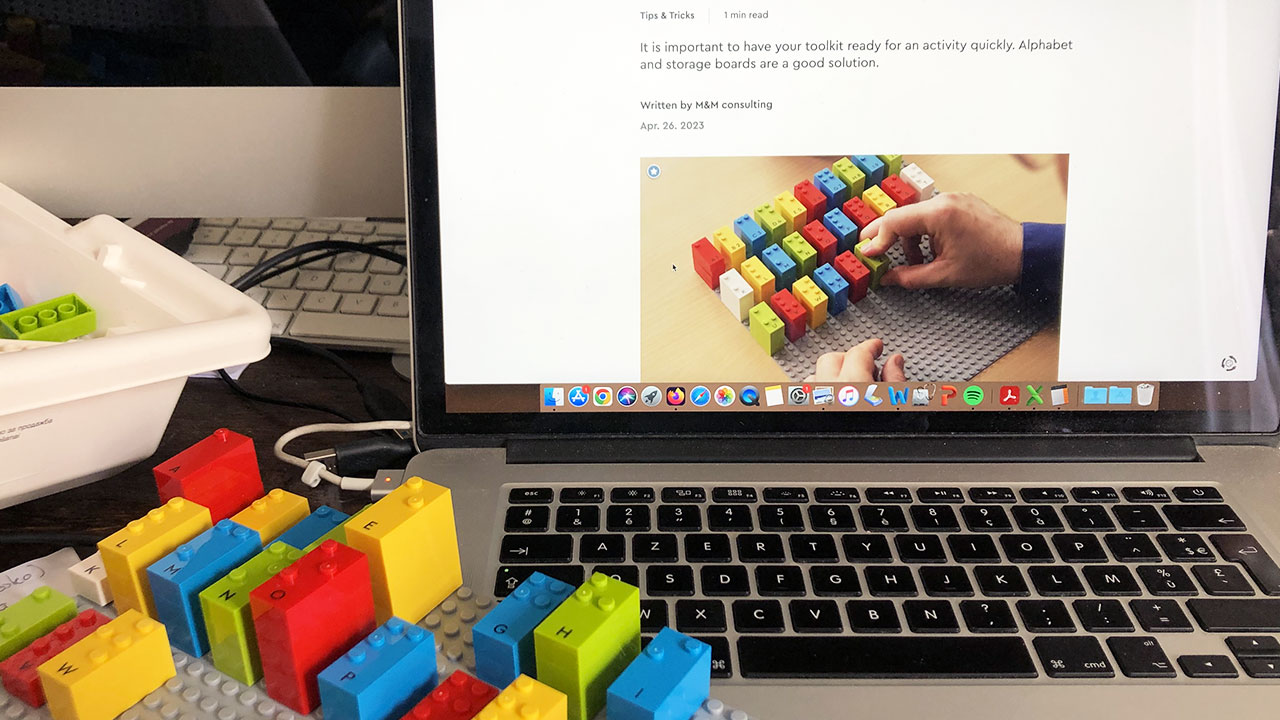Bricks around the CLOCK
Build a LEGO Braille Bricks clock and learn to tell the time.
Written by Gina Carr from USA – Sophie Dupin from France
Apr. 19. 2023

As Gina Carr says, we all have digital or talking watches now. But understanding hours, half hours, quarter hours and even the words 'before' and 'after' are all concepts that are used in life.
Sophie Dupin tells us about her way of telling time with LEGO, while Gina Car shows us how to build a clock with LEGO Braille bricks.
Learning to tell the time
Playing with the hours helps to become familiar with the writing of the time, but also to play with numbers in a different way.
Materials:
A clock with a small and a large hand (I added the numbering from 1 to 12 and raised marks for each minute to the Dymo).
Two sets of LEGO Braille numbers (1 to 0), the number symbol and the letter H for hour. The numbers can be sorted in ascending order beforehand or the pupil can be asked to do this.
Activities:
Set a time on the clock and ask the pupil to read it and write it with the LEGOs. You can play with the full hours and then the minutes if the pupil is good at it.
Alternatively, write a time with the LEGO Braille bricks and ask the pupil to set the clock to the correct time.

How to build a clock with LEGO Braille Bricks ?
Making their own clock with LEGO Braille bricks gives children a sense of achievement. It will also reinforce concepts of position, number sense and spatial placement on a plane, i.e. near, far, next to or underneath.

Instructions for making a play clock with manually moving hands
Use any old or inexpensive base plate you can find (you will need to drill a hole), but make sure it is 32x32 peg size or larger to ensure there is enough room for the blocks.
To begin, drill a ¼" hole in the centre of your base plate. If you can, use a variable speed drill and go slowly. If you drill too fast, the baseplate will melt.
Next, depending on what you are using to make the hands - I used a thick plastic folder - poke a hole in the ends large enough to put a brad or cotter pin through.
Measure the placement of the numbers by counting the pegs. If you place your 12 at the top, 6 at the bottom, 9 to the west and 3 to the east, it is very easy to place the rest of the numbers.
"As a child I had difficulty understanding how to tell time. I believe if I've had LEGO to make the clock, I would have been much more interested in learning!" Gina Carr

















